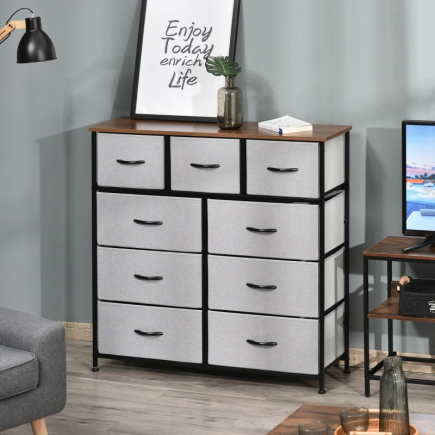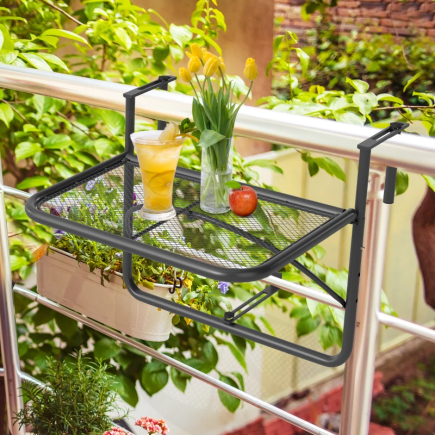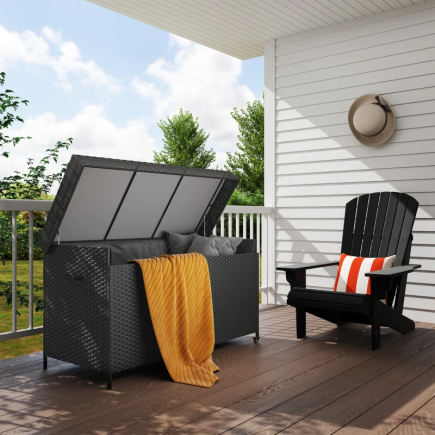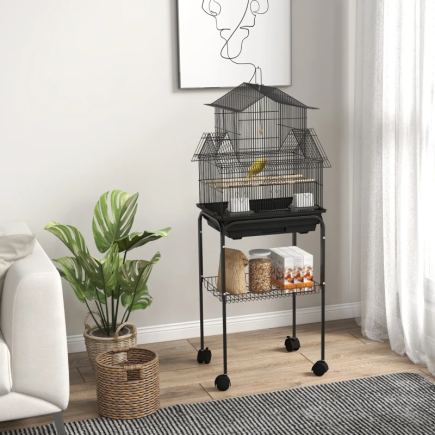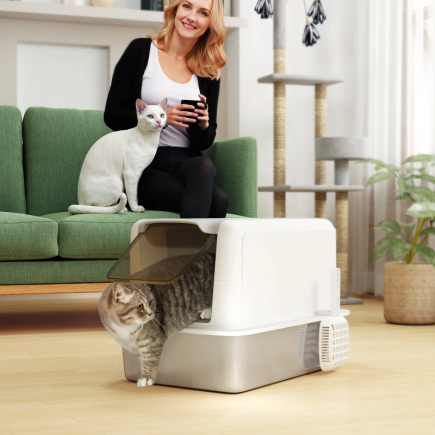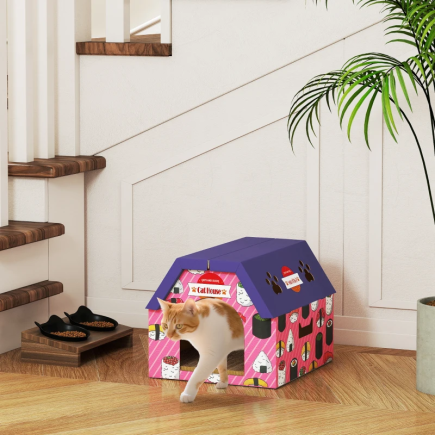
Floor lamps bring light and style to any room, but on carpet they often wobble, lean, or even tip over. Soft and uneven fibres make it difficult for lightweight or narrow bases to stay balanced, which can be both frustrating and unsafe, especially with kids or pets around.
The good news is, you don’t need a new lamp or carpet. With a few simple adjustments, you can make your floor lamp stable and secure.
Methods for Stabilizing a Floor Lamp on Carpet
1. Adding Duct Tape for Extra Grip
One of the simplest and cheapest fixes is using duct tape under the lamp base. This increases friction so the lamp doesn’t slide or shift when the carpet compresses.

How to Apply Duct Tape
- Unplug the lamp and carefully tilt it to expose the bottom.
- Wipe the underside to remove dust or dirt so the tape sticks properly.
- Cut 4-6 strips of duct tape and stick them across the bottom, slightly inside the edge so they stay hidden.
- Press the base firmly back down on the carpet.
How It Improves Stability
The duct tape grips both the base and the carpet fibres, reducing movement. It’s a temporary, low-cost solution, best for lightweight lamps in low-traffic rooms. Over time, the adhesive will wear out, so you may need to reapply.
2. Using a Rubber Pad or Plywood Board
If your floor lamp sinks into thick or plush carpet, the problem comes from the soft fibres compressing unevenly under weight. A firm platform underneath stops this instantly by distributing pressure more evenly.

Options You Can Use
- Rubber Pad: Best when slipping is the main issue. Pre-cut furniture pads are easy to buy, place under the base, and provide excellent grip.
- Plywood or Acrylic Board: Ideal for high-pile or shag carpets. Cut a disc or square slightly larger than the base, sand the edges for safety, and paint or cover with fabric to match your décor.
Steps to Apply
- Measure the diameter of your lamp base.
- Buy a ready-made pad or cut a board to size.
- Smooth or finish the edges if you’re making your own.
- Place the pad or board under the base and test the balance.
How It Improves Stability
Instead of sinking unevenly into soft carpet, the lamp now rests on a flat, stable platform. This spreads its weight, prevents leaning, and keeps the lamp upright even on thick or uneven carpet.
3. Installing a Stabilizer Base
For lamps that are naturally top-heavy like arc lamps or tall tripod designs, a stabilizer base is one of the most reliable long-term solutions.
How It Helps
- Expands the footprint of the base, distributing weight across a wider area.
- Reduces tipping risk, even on soft or uneven carpets.
How to Do It
- Purchase a universal stabilizer base or one designed for your lamp type.
- Attach it to the existing base following instructions.
- Test stability by gently nudging the lamp.
It’s a professional solution that works especially well for tall lamps but can make the base look bulkier.
4. Adding Weight to the Base
Sometimes a lamp tips because the base is just too light. By adding weight, you lower the centre of gravity, making it much harder to topple.
Ways to Add Weight
- Place sandbags, gym weights, or steel discs around the base.
- If the lamp has a hollow base, fill it with sand, gravel, or small stones.
- Use decorative planters or covers filled with heavy material to disguise the added weight.
Steps for Filling a Hollow Base
- Check if the base has a removable bottom cover.
- Open it and pour dry filler (sand, gravel, stones) inside.
- Seal it securely before placing it back on the carpet.
This method is extremely effective, but permanent if you fill the base. Exposed weights may affect appearance, so disguising them is recommended.
5. Using Shims or Felt Pads
Sometimes wobbling happens because the carpet compresses unevenly. One side of the lamp base sinks deeper, causing imbalance.

How to Fix It
- Place the lamp where you want it.
- Gently rock it to identify which side sits lower.
- Slide a shim, felt pad, or even folded cardboard under that side.
- Adjust until the lamp stands upright and steady.
This is a quick and affordable fix, perfect for small adjustments. However, it won’t prevent tipping if the lamp itself is very top-heavy.
6. Securing with Adhesive Strips
If your lamp moves every time someone brushes against it, adhesive Velcro strips can hold it firmly in place.
How to Use
- Attach one strip to the underside of the lamp base.
- Press the matching strip into the carpet fibres.
- Set the lamp back in place and press down firmly so it grips.
It’s strong, removable, and works best on low- to medium-pile carpets. For deep shag carpets, it’s less effective.
7. Employing Anti-Tip Devices

For households with children or pets, tipping hazards are a serious concern. Anti-tip devices such as safety straps or anchors are one of the most reliable ways to keep a Floor Lamp stable. These devices tether the lamp securely to a wall, floor, or heavy piece of furniture, ensuring it stays upright even if bumped.
How to Install
- Purchase a standard anti-tip kit, typically sold for securing furniture.
- Fix one end of the strap or anchor to the base or lower section of the lamp.
- Attach the other end to a stable point, such as a wall stud, floor bracket, or the back of a heavy cabinet.
- Make sure the strap is taut but not pulling, so the lamp stands straight while remaining firmly secured.
This approach offers maximum stability and safety. However, it does require drilling or screwing into surfaces, which makes it more permanent and less portable. It’s ideal for long-term setups where safety is the top priority.
8. Replacing the Lamp Base
Sometimes the real problem isn’t the carpet, it’s the lamp itself. If the base is too narrow, lightweight, or poorly designed, it will always wobble no matter how many adjustments you try. In that case, the most effective solution is to replace the base with a sturdier option.
Better Base Options
- Wide Diameter Base: A larger surface area spreads the lamp’s weight more evenly, reducing wobble.
- Weighted Metal Base (steel or iron): Heavier than plastic or resin, making the lamp much harder to tip over.
- Tripod Base: With three points of contact, tripod designs naturally balance well on soft or uneven carpets.
Benefit of a Stronger Base
A solid, well-designed base lowers the lamp’s centre of gravity and increases contact with the carpet, giving you long-term stability. It’s also a chance to upgrade the lamp’s look to match your décor.
Things to Keep in Mind
- Replacing just the base is possible on some lamps, but others may require buying a whole new lamp.
- Heavier bases can make the lamp harder to move, but they greatly reduce the risk of tipping.
This method is a permanent fix, ideal for lamps that remain unstable even after trying quick DIY solutions.
Choosing the Right Fix for Your Lamp
Keeping a floor lamp stable on carpet doesn’t have to be complicated. The best method depends on the specific issue:
- For minor wobbles: Use duct tape, shims, or hook-and-loop strips.
- For lamps sinking into plush carpet: Place the base on a rubber pad or a plywood board.
- For top-heavy or frequently bumped lamps: Add weight, install a stabilizer base, or use anti-tip devices.
- For old or poorly designed lamps: Replace the base entirely for a permanent fix.
By applying one or combining several of these methods, you can keep your floor lamp steady, safe, and stylish without the daily frustration of wobbling or tipping.
FAQs
1. Can I put a floor lamp directly on a rug over carpet?
Yes, but it may worsen instability. A rug adds another soft layer, so placing a firm board or pad underneath the lamp base helps prevent wobbling.
2. Do heavier lamps always stay stable on carpet?
Not always. While weight helps, a tall lamp with a narrow base can still tip. Balance and footprint size matter as much as overall weight.
3. Is it safe to use double-sided carpet tape instead of duct tape?
Yes, carpet tape can work since it’s designed to grip fibres, but it may leave sticky residue. It’s better as a short-term fix than a permanent solution.
4. Will moving the lamp frequently affect stability fixes?
Yes. Quick fixes like shims, duct tape, or adhesive strips may loosen if you move the lamp often. For portability, choose a stabilizer base or added weight instead.
5. Can I use furniture coasters or risers under a lamp base?
Yes, as long as they’re wide and stable. Coasters distribute weight better on plush carpet and prevent sinking, but avoid small risers that can make tipping worse.








